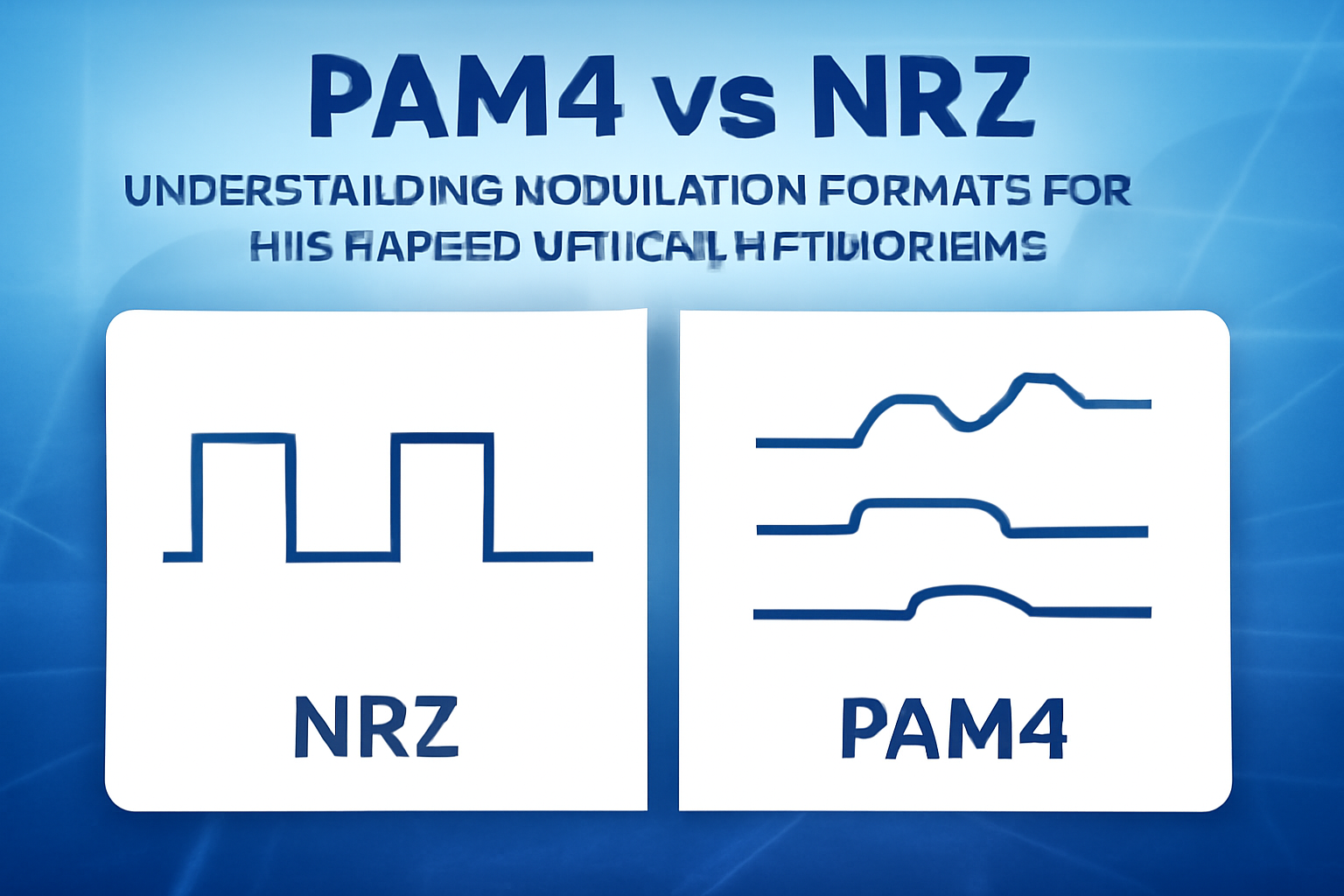
PAM4 vs NRZ: Modulation Formats Explained for Optical Networking
When you hear “PAM4” or “NRZ” in a conversation about high-speed optical networking, it might sound like just another piece of industry jargon. But in reality, these two modulation formats are at the heart of how modern optical transceivers transmit data.
I’ve worked with engineers who could configure a spine-leaf network in their sleep but hesitated when asked, “Should we go PAM4 or NRZ for this link?” So let’s break it down — what these terms mean, how they differ, and when to use each in your network.
1. What is NRZ? (Non-Return-to-Zero)
Definition:
NRZ is a two-level signaling method that represents binary data — a “1” is a high voltage level, and a “0” is a low voltage level. There’s no “return to zero” between bits; the signal simply stays at one of the two levels until the next bit.
How it Works in Optical Networks:
In optical transceivers, NRZ means there are two distinct optical power levels — light ON or light OFF — to represent digital bits. It’s simple, robust, and has been the standard for speeds up to 25 Gbps per lane.
Advantages:
- Simpler design, lower implementation cost.
- High signal-to-noise ratio (SNR) over moderate distances.
- Well-understood technology with mature manufacturing.
Limitations:
- Bandwidth efficiency tops out at one bit per symbol.
- At very high speeds (e.g., 50G per lane), signal integrity suffers due to channel losses.
2. What is PAM4? (Pulse Amplitude Modulation – 4 Levels)
Definition:
PAM4 uses four distinct amplitude levels to encode data, allowing two bits per symbol instead of just one. In effect, it doubles the data rate within the same bandwidth compared to NRZ.
How it Works in Optical Networks:
In a PAM4 signal, each symbol can represent “00,” “01,” “10,” or “11” using four optical power levels. This is what makes 50G, 100G, 200G, and even 400G optical modules possible without doubling the baud rate.
Advantages:
- Higher data throughput over the same channel bandwidth.
- Enables cost-effective scaling to higher Ethernet speeds.
Limitations:
- Smaller spacing between signal levels makes it more susceptible to noise.
- Requires more complex DSP (digital signal processing) and equalization.
- Shorter reach compared to NRZ at the same error performance.
3. Side-by-Side Comparison
| Feature | NRZ | PAM4 |
|---|---|---|
| Bits per symbol | 1 | 2 |
| Optical power levels | 2 | 4 |
| Complexity | Lower | Higher |
| Noise tolerance | Higher | Lower |
| Typical lane speed usage | Up to 25G/lane | 50G/lane and above |
| Reach capability | Longer at same SNR | Shorter unless compensated |
4. Where NRZ Still Shines
- Long-Reach Links: NRZ’s better noise margin makes it ideal for distances beyond 10 km without heavy DSP.
- Cost-Sensitive Applications: Simpler transceiver designs keep costs down for 1G, 10G, and 25G networks.
- Legacy Systems: Many existing DWDM and CWDM networks still operate on NRZ.
5. Where PAM4 is the Go-To Choice
- High-Speed Data Centers: PAM4 enables 100G, 200G, and 400G Ethernet in spine-leaf topologies without needing extra fibers.
- Short-to-Medium Reach: Most 400G QSFP-DD or OSFP modules use PAM4 for reaches of 500m to 2 km.
- Bandwidth-Limited Fiber Plants: When adding fibers isn’t an option, PAM4 doubles data capacity per channel.
6. Engineering Considerations Before Choosing
From my experience, the decision often comes down to trade-offs:
- Distance vs. Speed: PAM4 wins on speed, NRZ wins on reach.
- Budget vs. Future-Proofing: NRZ is cheaper now, PAM4 prepares you for tomorrow.
- Equipment Compatibility: Ensure your switches, routers, and optics all support the same modulation.
- Link Quality: PAM4 is more sensitive to dispersion and noise — invest in quality cabling and cleaning practices.
Conclusion
PAM4 and NRZ aren’t competing to “replace” each other; they’re tools for different jobs. NRZ remains the reliable workhorse for lower-speed or long-haul links, while PAM4 is the enabler for the bandwidth-hungry networks driving cloud, AI, and 5G infrastructure.
Choosing between them isn’t about following a trend — it’s about knowing your network’s goals, constraints, and future growth plans. If you match the modulation format to your application, you’ll get the best mix of performance, reliability, and cost-efficiency.